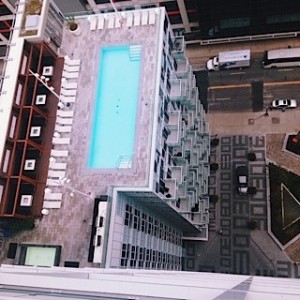 In the past couple of years, Toronto has become a destination for food and drink enthusiasts. In addition to the number of innovative and ethnic offerings available (not to mention those cheap eats), there have been just as many creative food festivals and events. Here are a few of our favourite food and drink festivals in Toronto that’s happening this holiday season into 2015:
In the past couple of years, Toronto has become a destination for food and drink enthusiasts. In addition to the number of innovative and ethnic offerings available (not to mention those cheap eats), there have been just as many creative food festivals and events. Here are a few of our favourite food and drink festivals in Toronto that’s happening this holiday season into 2015:
Drake Does Chrismukkah
December 19, 2014 6pm
Before the Christmas crunch, feast on the best of various cultural traditions of the holiday season at The Drake Hotel. The hearty meal (including prime rib, yorkshire pudding, latkes, and apple crumble among the samplings) is only $29.95. Reserve in advance before December 19 to participate in this cheerful occasion.
Guest Chef Pop-Up Series at Drake One Fifty
January 20-21, 2015
This fun injection of the Drake Hotel in the heart of Toronto’s Financial District hosts some of the best chefs from North America and beyond. The first pop-up dinner of 2015 will feature a Portuguese fusion menu from David Santos, ex Per Se, and now of Louro in NYC.
Roundhouse Winter Craft Beer Festival
January 31, 2015 11am-5pm
Just steps away from our 300 Front Street property, sample craft brew from over 20 breweries at the Winter Craft Beer Festival. Hosted by the Steam Whistle B rewery and just outside its doors at the Roundhouse Park, warm up over the outdoor fires with beer in glass sample mugs from great breweries like Oast House Brewers, Flying Monkeys, and Lake of Bays. Food trucks will also be on site if you get hungry. The first 500 attendees at the gates will get a free festival toque.
rewery and just outside its doors at the Roundhouse Park, warm up over the outdoor fires with beer in glass sample mugs from great breweries like Oast House Brewers, Flying Monkeys, and Lake of Bays. Food trucks will also be on site if you get hungry. The first 500 attendees at the gates will get a free festival toque.
Recipe for Change 2015
February 26, 2015, 6-9pm
Recipe for Change is FoodShare Toronto’s annual fundraiser for innovative school food programs and sustainability within the food industry. This party brings together over 30 exciting chefs, two craft brewers and four wineries at the historic St. Lawrence Market. It’s a fun party for a great cause.
Whether you’re in town for a quick visit or on business, or you are staying in a furnished apartment rental or suite for the long term, these festivals are a tasty way to stay warm throughout the winter.

 Some Torontonians joke that many of the buildings in Toronto look like they are from the 1970s and it’s because they were. Toronto in the 1970s was one that set up its future, now a construction boom of modern glass and steel buildings.
Some Torontonians joke that many of the buildings in Toronto look like they are from the 1970s and it’s because they were. Toronto in the 1970s was one that set up its future, now a construction boom of modern glass and steel buildings.




 I was surprised at all of the little details that were provided in the kitchen, especially. Utensils, plates, cups, bowls, baking items (mixers, baking sheets), a kettle, bowls, dish soap, dishwashing detergent, and towels are all available so you don’t have to worry about buying cooking equipment. I didn’t have to bring anything with me! I think my favourite feature had to be the red magnetic cabinets that close on their own. All you have to do is push the door.
I was surprised at all of the little details that were provided in the kitchen, especially. Utensils, plates, cups, bowls, baking items (mixers, baking sheets), a kettle, bowls, dish soap, dishwashing detergent, and towels are all available so you don’t have to worry about buying cooking equipment. I didn’t have to bring anything with me! I think my favourite feature had to be the red magnetic cabinets that close on their own. All you have to do is push the door. The balcony was also another favourite feature of mine. Not only could I get a birds eye view of the pool area but I was face to face with Toronto’s icon, the CN Tower. As a local, there’s something that makes me feel proud about that. The recreation area, complete with a pool, cabana, billiards area, and fully equipped fitness area (including yoga and spinning rooms) added to the impressiveness of my stay.
The balcony was also another favourite feature of mine. Not only could I get a birds eye view of the pool area but I was face to face with Toronto’s icon, the CN Tower. As a local, there’s something that makes me feel proud about that. The recreation area, complete with a pool, cabana, billiards area, and fully equipped fitness area (including yoga and spinning rooms) added to the impressiveness of my stay.